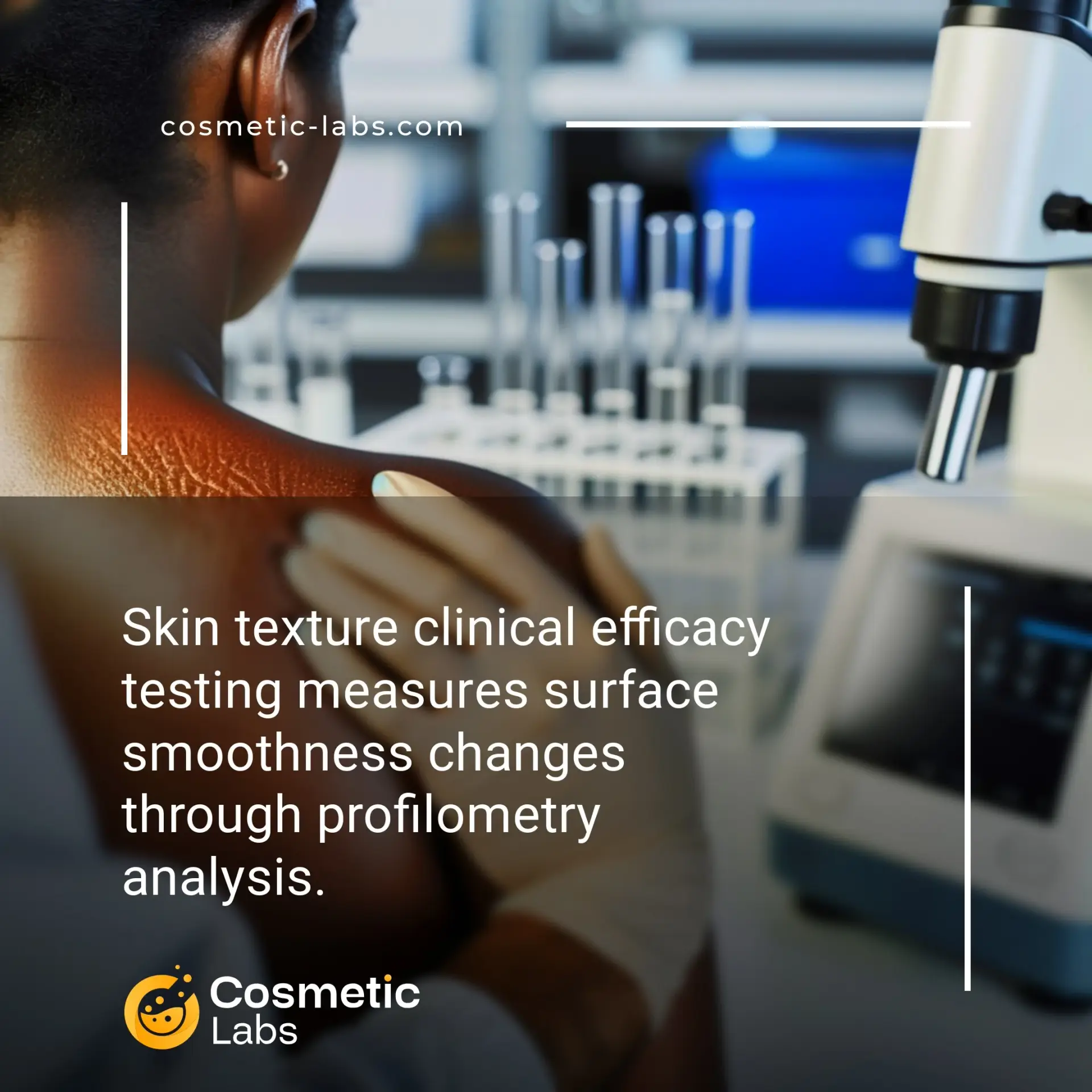Skin Texture Testing Services For Beauty Product Claims

What is Skin texture efficacy testing?
Skin texture clinical efficacy testing services measure how cosmetic products improve surface smoothness, pore appearance, and tactile feel through controlled studies using instruments like profilometry and dermatological assessment. Labs conduct before-and-after evaluations over 4-12 weeks to generate statistical proof of texture improvements, helping brands substantiate marketing claims with objective data that regulatory bodies and consumers trust.
Why do you need this service?
Cosmetic brands use skin texture clinical efficacy testing to validate anti-aging serums, exfoliating treatments, and moisturizers before launch, measuring parameters like skin roughness, pore size, and surface smoothness through 3D imaging and profilometry. Our platform labs deliver quantifiable proof of texture improvement that supports marketing claims and regulatory submissions, typically showing 15-30% texture enhancement within 4-8 week studies.
Who provides Skin texture efficacy testing services?
All cosmetic labs providing Skin texture efficacy testing services
Skin Texture Clinical Efficacy Testing Services
Skin texture clinical efficacy testing validates your product’s ability to improve skin smoothness, firmness, and surface quality through controlled studies. Labs on our platform use advanced measurement techniques to document texture improvements, providing the scientific backing needed for marketing claims and regulatory compliance.
Instrumental Texture Analysis Methods
Professional labs employ specialized equipment to measure skin texture changes with precision. Profilometry systems capture 3D surface topography, while optical coherence tomography reveals subsurface structural improvements.
Common measurement parameters include:
- Surface roughness (Ra values)
- Wrinkle depth and volume
- Skin elasticity coefficients
- Pore size distribution
These objective measurements typically show results within 2-8 weeks of product use, depending on the active ingredients and formulation strength.
Clinical Study Design and Protocols
Testing protocols follow standardized methodologies with controlled environmental conditions. Studies typically run 4-12 weeks with 20-50 participants, using split-face or randomized controlled designs to isolate product effects.
Key study elements include:
- Baseline measurements before treatment
- Weekly or bi-weekly follow-up assessments
- Photographic documentation with standardized lighting
- Statistical analysis of improvement percentages
Labs provide detailed reports with before/after data, statistical significance testing, and marketing claim substantiation suitable for regulatory submissions. Connect with experienced testing labs on our platform to discuss your specific texture improvement claims and study requirements.
Practical Applications of Skin Texture Clinical Efficacy Testing
Skin texture clinical efficacy testing applications provide brands with measurable data to validate product claims and differentiate formulations in competitive markets.
Anti-Aging and Smoothing Product Validation
Labs use profilometry and 3D imaging to measure surface roughness changes after 4-12 weeks of product use. These studies track Ra (average roughness) values and pore visibility scores to document texture improvements. Brands typically see 15-30% roughness reduction in effective formulations.
Testing protocols include before-and-after photography with standardized lighting, plus tactile assessments by trained panelists. Results support claims like “visibly smoother skin” or “reduces appearance of fine lines” with statistical backing.
Exfoliation and Resurfacing Product Assessment
Clinical studies measure desquamation rates and corneocyte cohesion to evaluate exfoliating products. Labs track stratum corneum turnover using tape stripping methods and confocal microscopy. Data shows how chemical peels or scrubs affect cellular renewal cycles.
Testing includes irritation monitoring through transepidermal water loss (TEWL) measurements. This ensures products deliver effective exfoliation without compromising barrier function. Studies typically run 2-8 weeks depending on ingredient concentration.
| Testing Method | Measurement | Typical Timeline | Key Applications |
|---|---|---|---|
| Profilometry | Surface roughness (Ra values) | 4-12 weeks | Anti-aging, smoothing serums |
| 3D Imaging | Pore size, skin topology | 8-12 weeks | Pore minimizers, primers |
| Tape Stripping | Desquamation rate | 2-4 weeks | Exfoliants, peels |
| TEWL Measurement | Barrier function | 24-72 hours | Gentle exfoliants, daily cleansers |
Ready to validate your texture-improving formulations? Contact labs on our platform to design custom efficacy studies that support your product claims with robust clinical data.